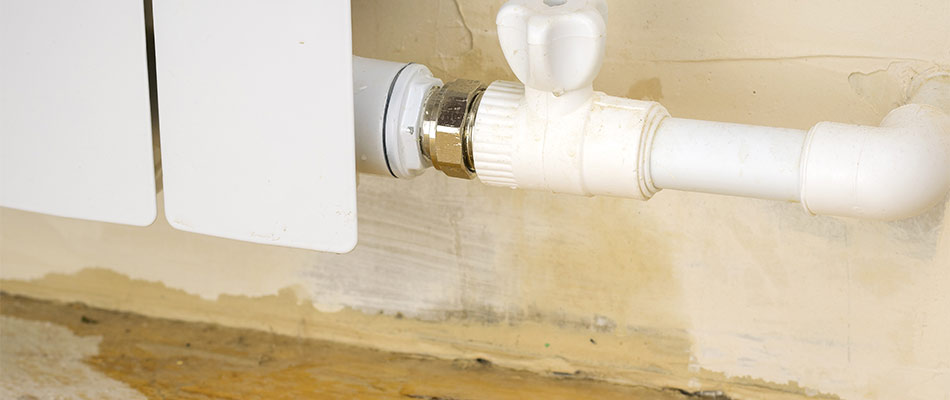Expose Concealed Water Line Leaks: Six Effective Detection Methods
Expose Concealed Water Line Leaks: Six Effective Detection Methods
Blog Article
Listed here down the page yow will discover additional extremely good points in relation to Hacks to detect leaks.

The moment you find a leakage, calling your plumber for repairs is the very best option. Nonetheless, some tiny water leakages may not show up. Below are some hacks that help if you can not detect it with your naked eyes.
Early discovery of leaking water lines can mitigate a prospective catastrophe. Aside from conserving you money, it will certainly lessen the stress and stress.
Inspect Water Usage
Assess your water expenses and track your water usage. As the one paying it, you need to see if there are any inconsistencies. If you find sudden changes, in spite of your usage coinciding, it suggests that you have leaks in your plumbing system. Keep in mind, your water costs must fall under the exact same range on a monthly basis. A sudden spike in your costs indicates a fast-moving leak.
Meanwhile, a consistent boost monthly, despite the exact same behaviors, reveals you have a sluggish leakage that's likewise slowly escalating. Call a plumber to thoroughly check your residential property, specifically if you feel a warm location on your floor with piping below.
Evaluate as well as Analyze the Scenario
Property owners need to make it a practice to check under the sink counters and even inside cabinets for any kind of bad odor or mold and mildew development. These 2 red flags show a leakage so punctual interest is needed. Doing routine evaluations, also bi-annually, can save you from a significant issue.
Analyze the Water Meter
Checking it is a proven way that helps you find leaks. If it moves, that shows a fast-moving leakage. This means you might have a slow-moving leakage that might even be below ground.
Asses Exterior Lines
Don't fail to remember to inspect your outside water lines as well. Must water permeate out of the link, you have a loosened rubber gasket. One tiny leakage can throw away tons of water and increase your water costs.
Do a Food Coloring Test
When it comes to water usage, 30% comes from commodes. If the color in some way infiltrates your dish throughout that time without flushing, there's a leakage in between the tank and dish.
Much more significantly, if you understand your house is currently old, keep a watchful eye on your heating systems, tubes, pipelines and so on. Check for discolorations and deteriorating as many pipelines as well as appliances have a life span. They will certainly likewise normally degrade because of wear and tear. If you think dripping water lines in your plumbing system, don't await it to intensify. Call a professional plumber immediately so you do not end up with a horrible mess in your home.
The moment you find a leak, calling your plumber for repair services is the finest service. Some small water leaks might not be noticeable. Inspecting it is a guaranteed way that helps you uncover leaks. One tiny leakage can lose heaps of water and increase your water expense.
If you think dripping water lines in your plumbing system, don't wait for it to escalate.
WARNING SIGNS OF WATER LEAKAGE BEHIND THE WALL
PERSISTENT MUSTY ODORS
As water slowly drips from a leaky pipe inside the wall, flooring and sheetrock stay damp and develop an odor similar to wet cardboard. It generates a musty smell that can help you find hidden leaks.
MOLD IN UNUSUAL AREAS
Mold usually grows in wet areas like kitchens, baths and laundry rooms. If you spot the stuff on walls or baseboards in other rooms of the house, it’s a good indicator of undetected water leaks.
STAINS THAT GROW
When mold thrives around a leaky pipe, it sometimes takes hold on the inside surface of the affected wall. A growing stain on otherwise clean sheetrock is often your sign of a hidden plumbing problem.
PEELING OR BUBBLING WALLPAPER / PAINT
This clue is easy to miss in rooms that don’t get much use. When you see wallpaper separating along seams or paint bubbling or flaking off the wall, blame sheetrock that stays wet because of an undetected leak.
BUCKLED CEILINGS AND STAINED FLOORS
If ceilings or floors in bathrooms, kitchens or laundry areas develop structural problems, don’t rule out constant damp inside the walls. Wet sheetrock can affect adjacent framing, flooring and ceilings.
https://www.servicemasterbyzaba.com/blog/how-to-detect-water-leakage-in-walls/

As a passionate person who reads about Hacks to detect leaks, I assumed sharing that post was important. Sharing is good. You just don't know, you could be helping someone out. I treasure reading our article about Hacks to detect leaks.
Click Here Report this page